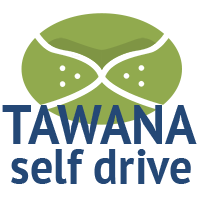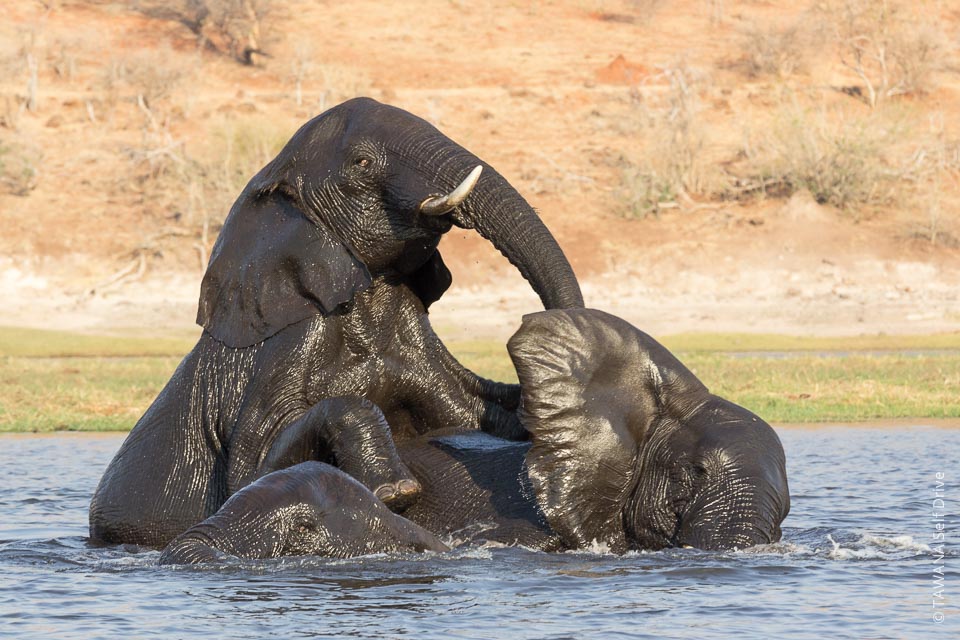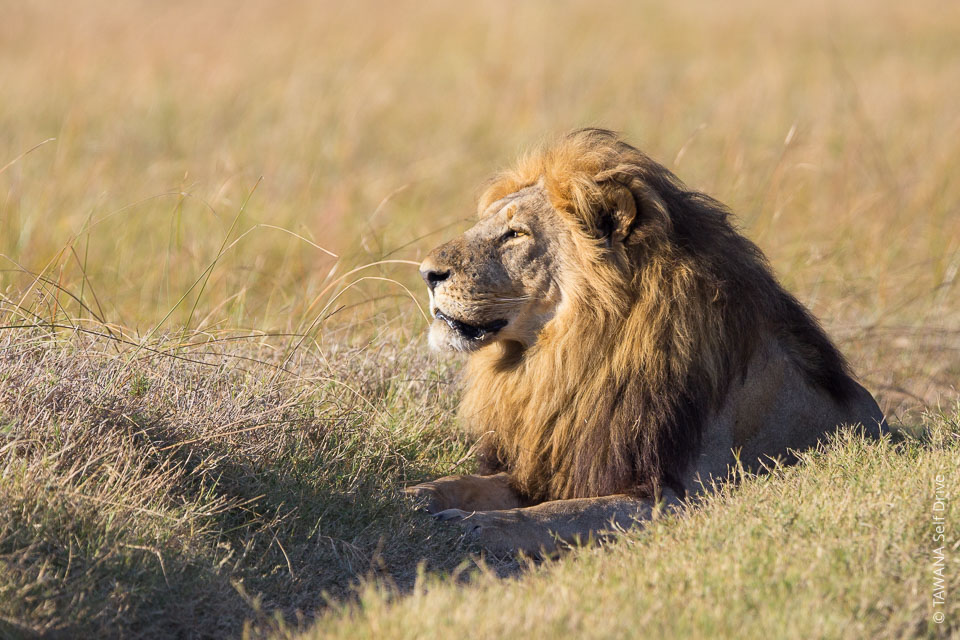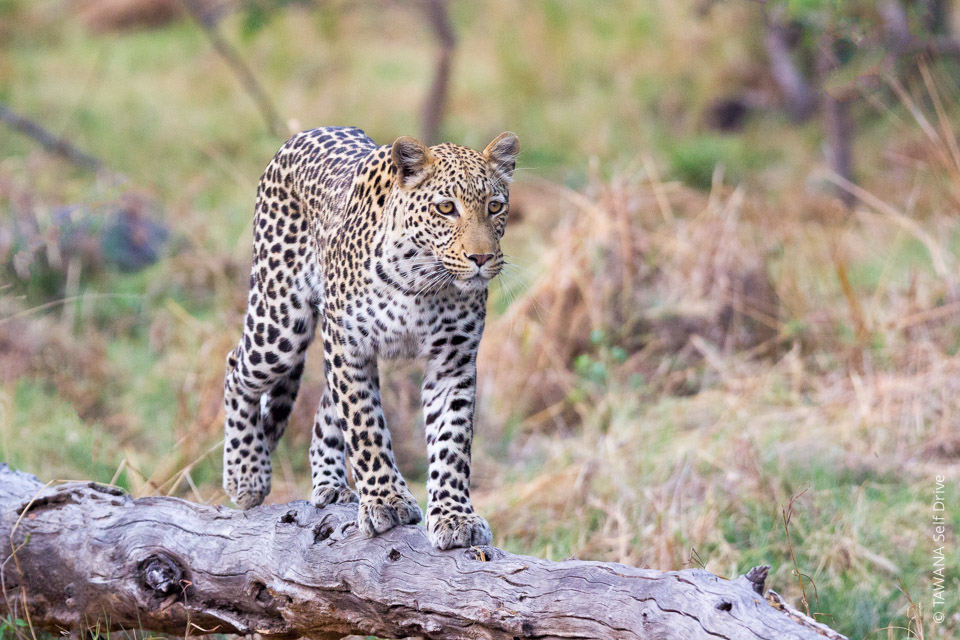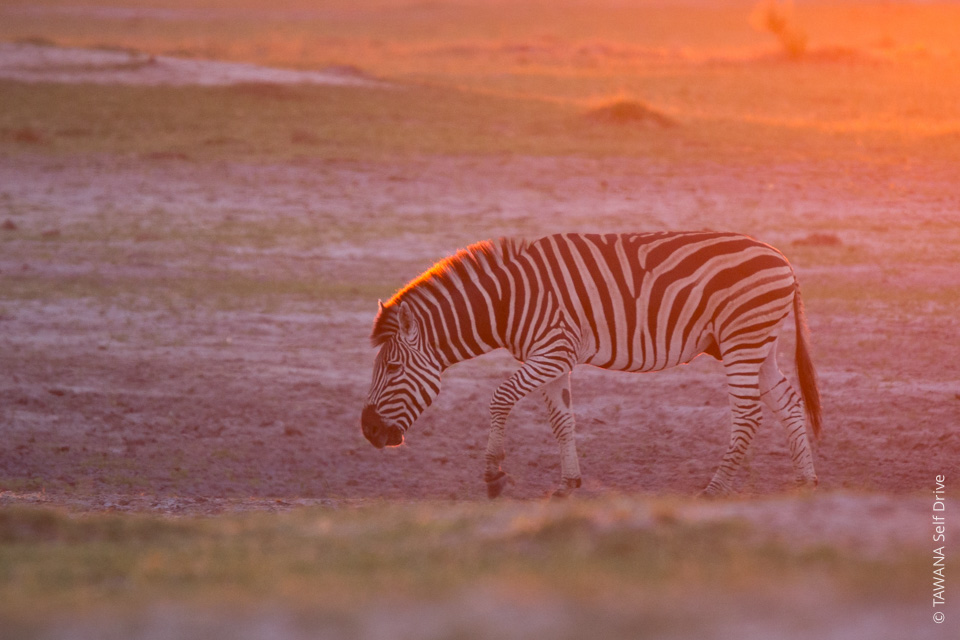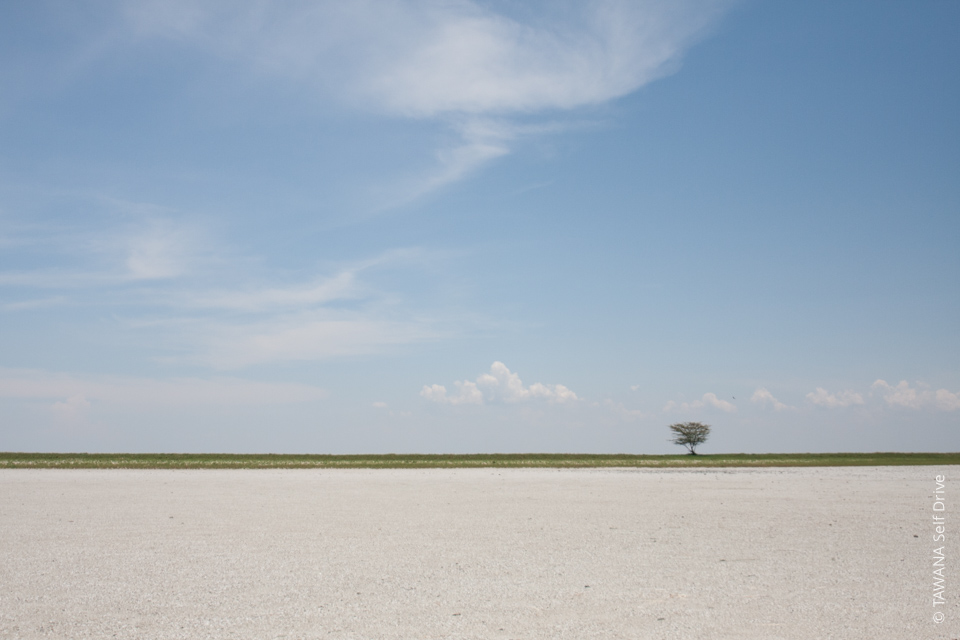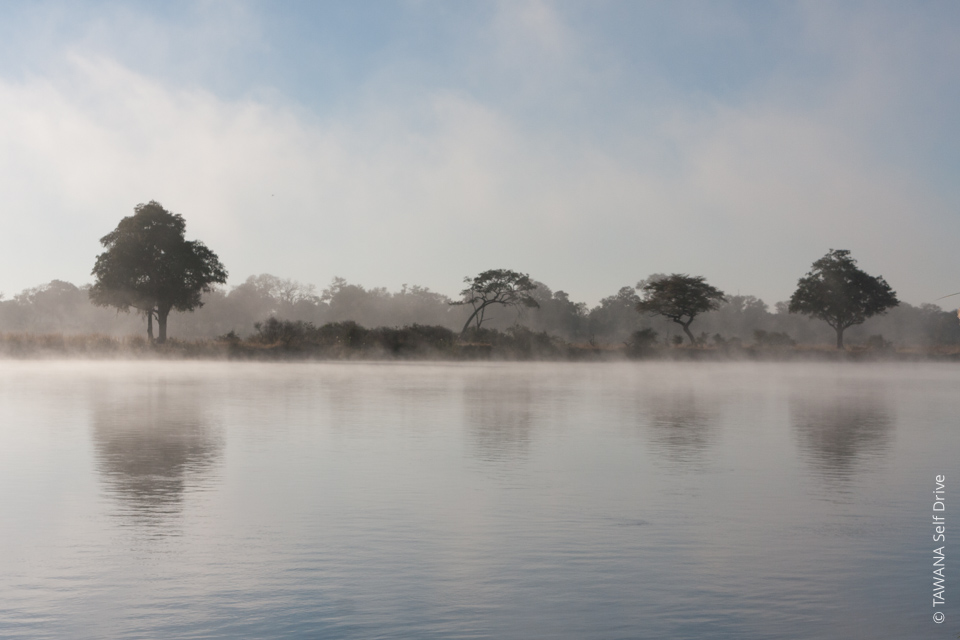
Hippo, Khwai Concession, Botswana
Self-Drive Safari Itinerary in Botswana
The Water route
A great self-drive adventure along iconic rivers and through the magnificient wetlands of Botswana
The Water Route : the ultimate self-drive adventure in Botswana
80% covered by desert, Botswana benefits from a near-miraculous and fragile system of irrigation. From its source in Angola, the Kwando river irrigates the north-east of the country, swelling the Linyanti and Chobe rivers before joining the waters of the Zambeze, which together attract an incredibly diverse range of wildlife.
To the west, the Kavango river disappears amidst the arid terrain of the Kalahari. It constitutes the second largest inland delta in the world and drains a network of rivers and canals towards the south, along which a rich array of wildlife can be found.
Following the Water Route will be the self-drive adventure of a life time, leading into the heart of the wild and authentic natural beauty of the north of Botswana from the Chobe river, along the Savuti chanel and the lagoons of the Okavango Delta, then up to the Boteti river.
Detailed itinerary
KASANE
The small town of Kasane is the perfect place to start a self-drive adventure in Botswana. Its location is hard to beat, at the junction of 4 countries: Botswana itself, Namibia, Zambia and Zimbabwe. It is also at the entrance of Chobe National Park, one of the most beautiful in southern Africa.
Kasane is a great starting point for the water route. As well as an international airport with regular flights from Johannesburg in South Africa, the town has several supermarkets, cash machines, garages and petrol stations, which means you will have all the supplies and support you need before setting off.
Kasane is also a peaceful and delightful town, well worth relaxing in for a few days and making the most of the many activities on offer. These include the unmissable crossing over the Chobe river, which will give you an unforgettable first look at the wildlife of Botswana.
Accommodation
There are many ways of staying in Kasane and around. Lodges, self-catering units, bushcamps and campsites are all available in the area.
Situated in north-east Botswana, Chobe National Park is made up of several different ecosystems which effectively divide the Reserve into 4 large regions.
The River Front, along the Chobe River, is characterized by abundant vegetation and each year attracts vast numbers of animals.
The Savuti Marsh area in the south-west of the park, is a fascinating vantage point from which to observe predators and the annual migration of zebras. The region of Linyanti in the north-west follows the river of the same name and attracts numerous mammals including the rare Lechwe and Sitatungas. The final, less well-known section is Nogatsaa in the south-east, which consists mainly of forests.
With such diversity, Chobe NP is a national park with a huge range of attractions to delight any visitor, whatever their interests. Moreover, near Kasane, the River Front is an excellent place to start driving in a 4×4, along sandy tracks which are rather deep, yet quite passable.
THE CHOBE RIVER FRONT
Whether by boat or 4×4, exploring the banks of the Chobe River is an amazing experience. It is along here that animals converge during the dry season; the sight of elephants and buffalos, closely followed by numerous predators, is just incredible. The river banks are also a great location for bird-lovers – and of course the sunsets are unforgettable.
Road conditions
Up to Serondola, roads are mainly sand tracks which can become thick sand in some places. After Serondola, the surface is generally hard but also rough.
Accommodation
Chobe River Front can be reached from Kasane, but if you want a true wilderness experience, we suggest you stay at Ihaha campsite, along the Chobe river (early reservation is essential during the peak season).
Supplying
Unavailable outside Kasane. A new petrol station has recently opened in Muchenje, west of Chobe River Front.
THE SAVUTI CHANEL
Truly at the interior of the park, Savuti boasts most of the Chobe species, except for water-loving antelope attracted by the River Front. Land of mystery, Savuti is world-reknowned for its predators, particularly lion, cheetah and hyena, of which there are large resident populations.
The Savuti Channel flows from the Linyanti River for about 100 kilometres, carrying water away from the river and releasing it into a vast swampland called the Savuti Marsh, and further south onto the Mababe Depression, which is also fed by the Ngwezumba River from the northeast. When the immense and flat Mababe is filled with water, it becomes a hotspot for thousands of migratory birds and animals, particularly large herds of zebra.
Geographically, Savuti is an area of many curiosities. One of its greatest mysteries is the Savuti Channel itself, which has over the past 100 year inexplicably dried up and recommenced its flow several times. This irregular water flow explains the numerous dead trees that line the channel, for they have germinated and grown when the channel was dry and drowned when the channel flowed again. Channel flowing or not, Savuti keeps its special atmosphere beloved by a number of big cats.
Road conditions
Most of the roads are made of sand tracks and clay tracks with some fords.
Always check the better between the Marsh Road, which is usually muddy during the wet season and Sand Ridge Road which is deeply sandy during the dry season.
Accommodation
Savuti campsite is the only accommodation for self-drivers to visit this outstanding Chobe region (early reservation is essential during the peak season). But it’s also an option to reach one of the lodges available in Savuti (Ghoha Hills, Savuti Safari Lodge, Savuti Elephant Camp, Savuti Tented Camp).
Supplying
Not available.
The Moremi Game Reserve is an important part of the Okavango Delta and is known as one of the most stunning wildlife habitats in Africa. It consists mainly of floodplains and a network of canals which enclose two strips of land: Chief’s Island and Mopane Tongue.
The ecosystem is unspoilt and Moremi is one of the richest and most varied in the African continent. The area is teeming with birds, and most African mammals can be seen here.
The reserve is a paradise for off-road drivers, as much for its wild character as for the challenging driving. Exploring this vast landscape will be one of the highlights of your self-drive adventure in Botswana.
MOREMI AND THE KHWAI RIVER
The floodplains of Khwai are a magnificent sight and are the perfect opportunity to observe game, whether inside or outside the boundaries of the reserve. Predators are widespread along the river, as are numerous birds.
Road conditions
Sand track which can become loose sometimes. Whatever the season, fording can be very difficult especially if heavy floods have occurred during the year.
Accommodation
The Khwai campsite (North Gate) is a good option to visit this part of Moremi. But there are more options than inside the reserve, with places in the vicinity like Mgotho Camp, managed by Khwai Development trust.
Supplying
In the small village of Khwai, you can find basic food and drinks.
MOREMI XAKANAXA LAGOON
Your self-drive adventure in Botswana continue into the Xakanaxa area. Located in one of the most beautiful areas of the Delta, the lagoon of Xakanaxa forms a patchwork of mopane woodland and flood plains, surrounded by deep rivers. Its numerous twists and turns are a real labyrinth where animals and birds abound. Antelopes in particular are very common and wild dogs can often be spotted on the vast plains in the vicinity of the campsite.
Road conditions
Mainly sand roads, sometimes deep, and clay tracks sometimes wet. Be prepare to cross fords and bridges in more or less good condition. Beware of flooded roads which could be impassable even during the dry season. Always ask rangers in the parks for advice.
Accommodation
Xakanaxa campsite is the only campsite for self-drivers (early reservation is essential during the peak season).
Supplying
Not available.
MOREMI THIRD BRIDGE
Situated not far from Xakanaxa, the area of Third Bridge alongside Mboma Island is without doubt the most famous in all of Moremi and the favourite location for many drivers. Famous for its extraordinary wildlife in the dry season, you will be in close proximity to the animals during the day in the vast surrounding plains, as well as at night in the campsite.
Road conditions
Mainly sand roads, sometimes deep, and clay tracks sometimes wet.
Be prepare to cross fords and bridges in more or less good condition. Beware of flooded roads which could be impassable even during the dry season. Always ask rangers in the parks for advice.
Accommodation
Along the Moanachira river, Third Bridge is the only campsite for Self-drivers (early reservation is essential during the peak season).
Supplying
Not available.
MOREMI SOUTH GATE
A new network of tracks has been created around South Gate to increase the appeal of this area of the park, one less often noticed by visitors. Numerous animals can now easily be seen here, in particular giraffes and leopards in the mopane woodland – one of their favoured habitats.
Road conditions
Deep sand tracks, especially after Second Bridge.
Accommodation
There is only one campsite within Moremi, at South Gate (Maqwe). Outside the reserve, camping for self-drivers will be available at Mankwe Mopani Campsite or at Kaziikini (Sankuyo Community Trust).
Supplying
Unavailable outside Maun.
MAUN
Located between the desert and the delta, Maun is the tourism capital of Botswana. Even if the town is important only for its numerous shops and commodities, it remains an unmissable stop-off point for drivers in transit who might be able to round off their exploration of the Okavango by plane, with a panoramic view over the delta below!
Road conditions
Sand tracks from South Gate to Buffalo Fence (32 km), gravel road from Buffalo Fence to Shorobe (22 km), tarred road from Shorobe to Maun (40 km).
Accommodation
As well as in Kasane, there are many accommodations available in Maun and in the vicinity, whether in lodge, self-catering, bushcamp or campsite.
Supplying
You will find cash machine, supermarkets, petrol stations and garage. This is an essential step before going further.
The Boteti River, along the west of the Makgadikgadi National Park, is filled by the floods of the Okavango and is a crucial source of water for the animals living in(or migrating to) this desert area, which used to be a huge prehistoric lake.
Like at Savuti, the Boteti River remained dry for many years, leaving nothing more than a few permanent water holes here and there. But since the waters returned in 2009, wildlife has once again flourished in this stunning area, and species more associated with a desert environment – such as oryx and springbok – can be seen here.
MAKGADIKGADI NP AND THE BOTETI RIVER
Situated along the river, Khumaga is the ideal starting point for exploring the banks of the Boteti to the north and also for getting to the south to see the first pans typical of this area of Botswana.
Road conditions
Up to the park entrance (Phuduhudu Gate), this is a 132 km tarred road. Then there are deep sand tracks for 33 km to reach Khumaga.
Accommodation
There are 2 campsites within the park. Ncuja Hills is the wilder one, while khumaga is more confortable and well located to explore Boteti riverfront.
Supplying
Not available outside Gweta, 45 km away from Park entrance.
NATA
The route of the water reaches even into this desert region of Botswana. Depending on the season and the year, Sowa Pan becomes a huge lake, attracting a giant colony of flamingos. The Nata Bird Sanctuary is, in its entirety, a paradise for bird-lovers. And for those who prefer more earth-bound wildlife, Elephant Sands is a great place to spend several hours up close with elephants and rhinos, as well as wild dogs.
Road conditions
From Kumaga, to get to the park exit (Phuduhudu Gate ) there are 33 km of quite deep sand tracks. Then, up to Nata, it’s a 132 km tared road.
Accommodation
Several accommodations are available in Nata whether in lodge, bushcamp or campsite.
Supplying
You will find cash machine, supermarkets, petrol stations and garage in Nata.
KASANE
This trip ends in Kasane.
Road conditions
The road from Nata to Kasane is tarred.
Accommodation
There are many ways of staying in Kasane and in the surrounding area. Many lodges, self-caterings, bushcamps and campsites are available.
Supplying
On the road to Kasane, Pandamatenga, a city at the border of Zimbabwe will allow you to get refreshment and food supplies, to refuel, to withdraw money and to repair your car.
VICTORIA FALLS
How else to finish your journey along the waters other than by the banks of the mythical Zambeze and by visiting the spectacular Victoria Falls! Forming the largest waterfall in the world, the Falls are in a part of the river 1.7km wide where the water plunges earthward from a height of close to 100m. The flow is greatly increased following the rainy season.
The clouds of water mist arising from it can be seen from more than 30km away. Forming a natural border between Zambia and Zimbabwe, they are most impressive on the Zimbabwean side but may also be visited from both countries.
PANHANDLE
For bird lovers and fishing enthusiasts or those who merely want to gaze in admiration at the Okavango itself, exploring the north-west of the Delta is a question of continuing beyond the well-worn routes, and this can be arranged from Maun.
The Panhandle is a branch of the Kavango River which stretches for 70km before the Delta forms. Its deep waters allow for near-miraculous fishing of pike and bream. Its abundant reeds, papyrus and waterlillies are a paradise for the many species of native and migratory birds.
Road conditions
It’s quite easy to reach Panhandle from Maun. The main road is tarred up to Shakawe then sandy tracks will allow you to get to the riverfront.
Accommodation
Campsites, houseboats and lodges are available at Sepopa, Seronga and Shawake.
Supplying
Sepopa and Seronga provide basic supplies. Shakawe has cash machine, supermarkets and petrol stations.
Some reasons to choose this route
A starting point in Kasane, letting you get familiar with the drive by 4×4 to Chobe.
North Botswana self-drive adventure encompasses the best locations for watching wildlife.
2 extended options for an unforgettable exploration of southern Africa!
